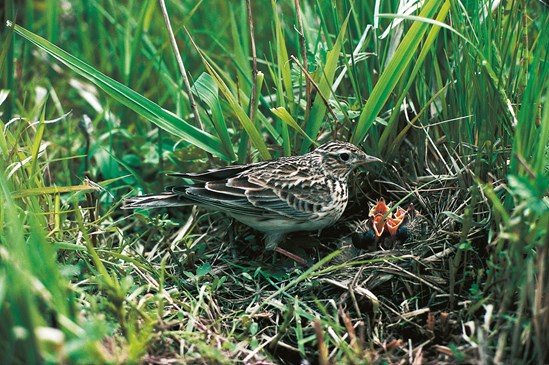Roadbridge, a sub-contractor to Align JV - the main works civils contractor that is delivering the portion of HS2 that includes the Chiltern Tunnel, has begun using the drones during its extensive environmental mitigation programme on the tunnel South Portal site next to the M25 in Buckinghamshire.
Monitoring nesting bird populations is crucial, providing accurate information which results in more effective ecological mitigation to protect the natural environment around work sites. At twelve metres above ground level the drone captures approximately a 9m2 area, providing a reduction in search times, and a clear perspective from a 90-degree view of the ground below. Using a thermal camera, the drone can calibrate to the ground temperature and other objects to lock onto a heat source and identify the bird nests. This includes birds on the nest, eggs on the nest and birds sheltering on the ground.
Exclusion zones are then put on Computer Aided Design (CAD) drawings and into the Global Positioning System (GPS) of machinery working on site to let operators know when they are working near exclusion zones, to protect nests and allow works to progress safely.
During the initial trial, in three hours of drone survey time with one drone operator and one ecologist, five nests were found, compared to one nest found in 20 hours of survey time using traditional methods. Traditional surveys require ecologists to observe the Skylarks flying then running to their nest, and to use walking transect surveys to accurately locate them, which can be invasive and sometimes ineffective, resulting in much larger exclusion zones being required.
HS2 continues to undertake one of the largest ecological survey programmes in the UK, with some of the country’s most experienced and leading ecological consultants working on the project. Surveys provide detailed information on the impacts of the scheme and enable the best mitigation to be adopted to reduce impacts and develop opportunities to leave a better natural environment legacy.
HS2’s Environment Director Peter Miller said:
“HS2 places a huge emphasis on ecological protection and we actively encourage our supply chain to use innovative technologies like this to refine and improve the way we collect information on species.
“As well as delivering a low carbon railway, that will help reduce transport pollution and improve air quality, HS2 is committed to creating a Green Corridor of richer, more diverse and better-connected landscapes along the railway. The Colne Valley area, where the drone surveys took place, is renowned for its rich landscape and biodiversity, so proactive environmental survey and monitoring is crucial in order to protect the local ecology.”
Vincent Ryan, Environmental Advisor at Roadbridge said:
“Skylark populations have dramatically declined since the 1970s predominately due to changes in agricultural practices and reduced areas of grassland to breed in. As ground-nesting birds, Skylarks are one of the most difficult birds to survey, and in a construction environment it is very important to be able to accurately locate their small and well camouflaged nests in order to mitigate appropriately.
“One of the contributing factors that influenced us to find innovative alternatives to ecological surveying and mitigation was the Covid-19 pandemic, which led to restrictions on site to carry out surveys. Our solution was to use the advanced technology of thermal imaging drones, and we were pleased to find they provided a highly accurate and faster survey method than traditional survey techniques, allowing us to find nests in grassland areas and monitor fledging success with minimal disturbance.”
Adam Cockayne, Environment Manager at Align JV said:
“Align JV is responsible for all ecological matters on this part of the HS2 project, and we have been working with Roadbridge to introduce this innovation to ensure that the earthworks we’re carrying out do not disturb or damage nesting birds in the area.
"Following the results that using thermal drone imaging has delivered, we will be rolling out thermal camera drones as a standard method for surveying all potential Skylark nesting areas. Working with Roadbridge we are also investigating the potential to develop and implement this methodology in other ornithological and ecological surveying.”

